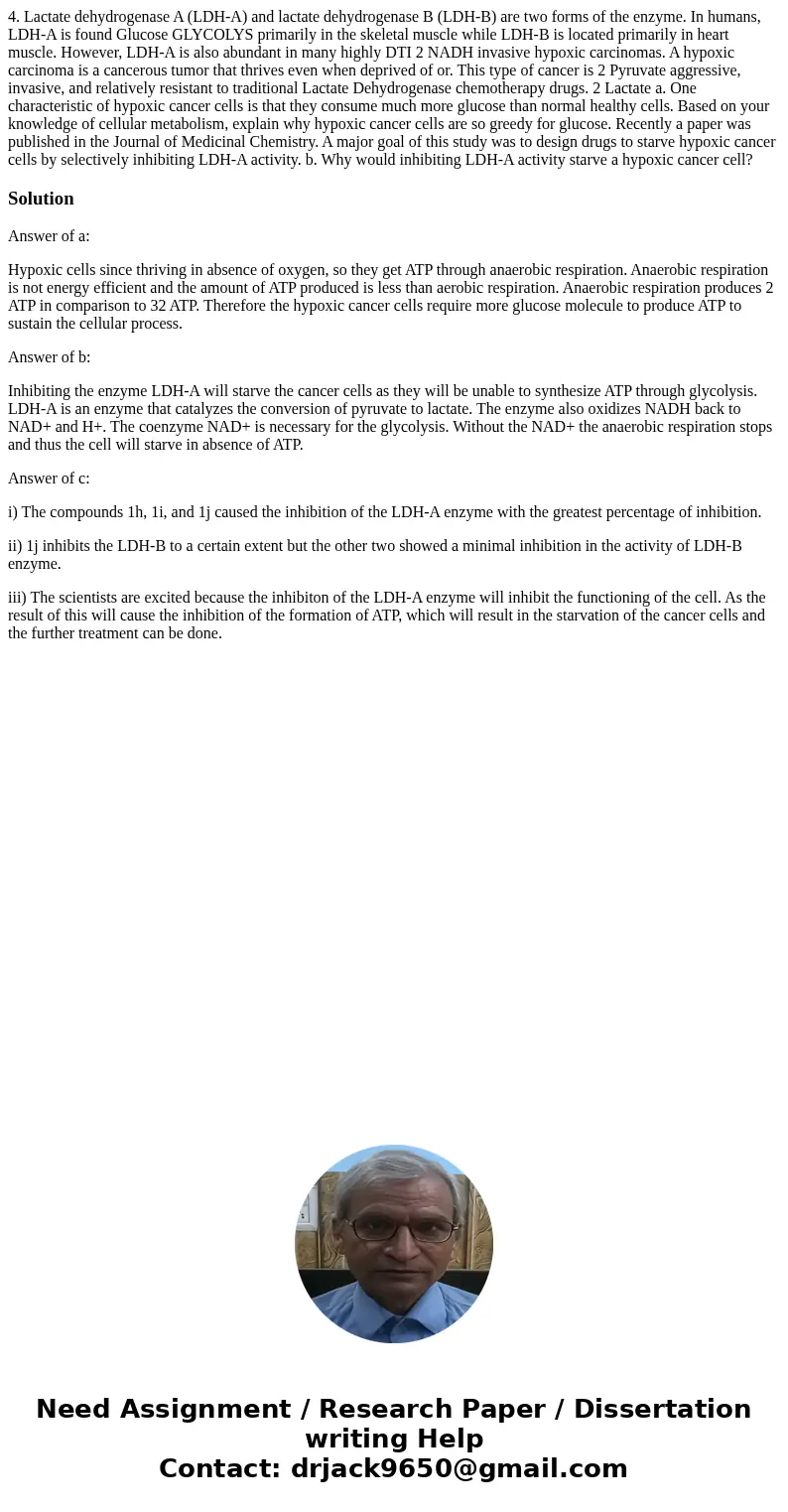4 Lactate dehydrogenase A LDHA and lactate dehydrogenase B L
Solution
Answer of a:
Hypoxic cells since thriving in absence of oxygen, so they get ATP through anaerobic respiration. Anaerobic respiration is not energy efficient and the amount of ATP produced is less than aerobic respiration. Anaerobic respiration produces 2 ATP in comparison to 32 ATP. Therefore the hypoxic cancer cells require more glucose molecule to produce ATP to sustain the cellular process.
Answer of b:
Inhibiting the enzyme LDH-A will starve the cancer cells as they will be unable to synthesize ATP through glycolysis. LDH-A is an enzyme that catalyzes the conversion of pyruvate to lactate. The enzyme also oxidizes NADH back to NAD+ and H+. The coenzyme NAD+ is necessary for the glycolysis. Without the NAD+ the anaerobic respiration stops and thus the cell will starve in absence of ATP.
Answer of c:
i) The compounds 1h, 1i, and 1j caused the inhibition of the LDH-A enzyme with the greatest percentage of inhibition.
ii) 1j inhibits the LDH-B to a certain extent but the other two showed a minimal inhibition in the activity of LDH-B enzyme.
iii) The scientists are excited because the inhibiton of the LDH-A enzyme will inhibit the functioning of the cell. As the result of this will cause the inhibition of the formation of ATP, which will result in the starvation of the cancer cells and the further treatment can be done.

 Homework Sourse
Homework Sourse